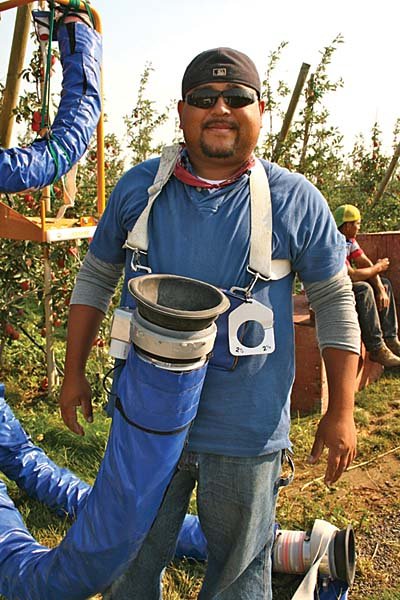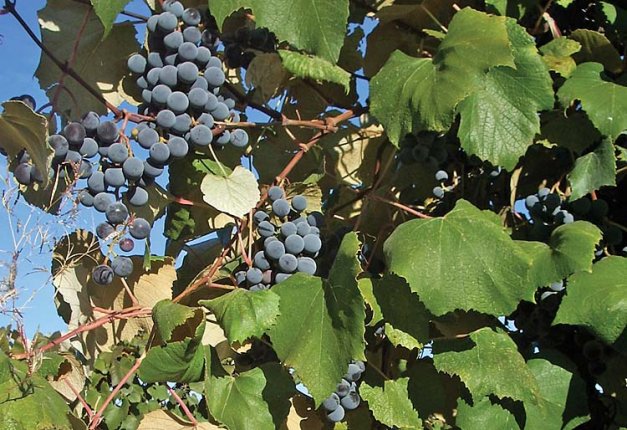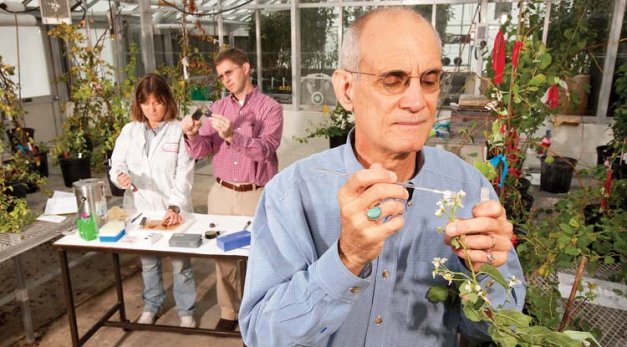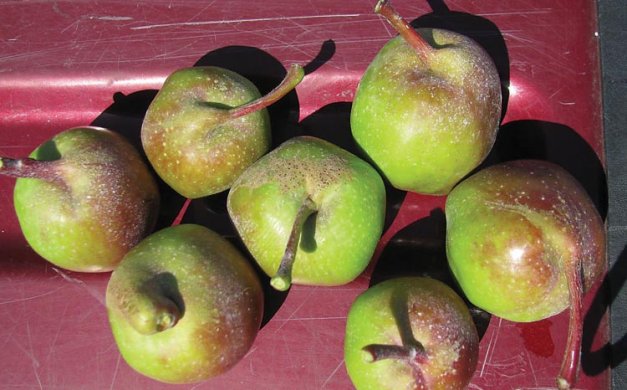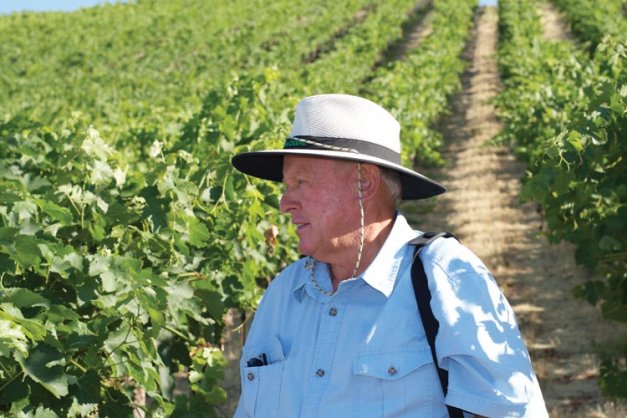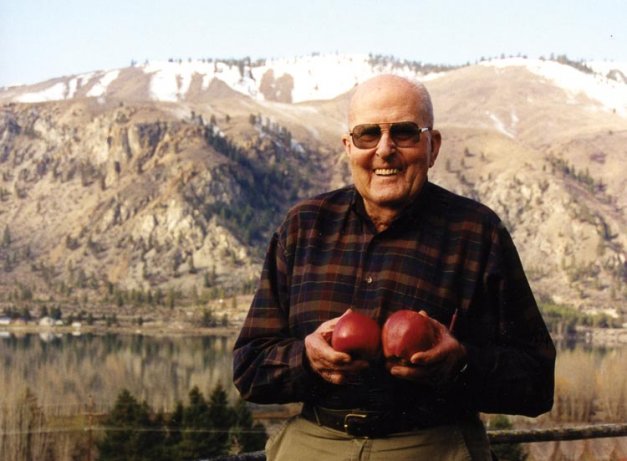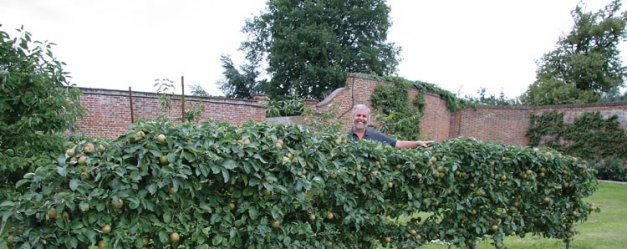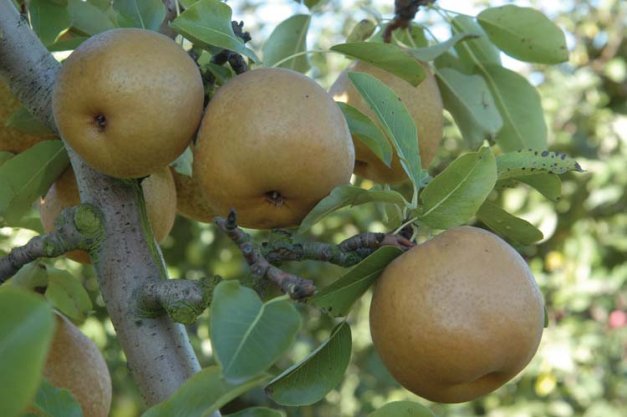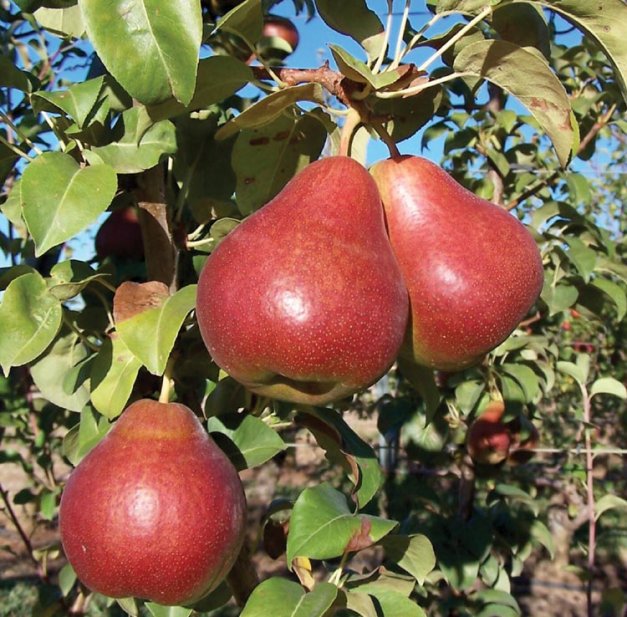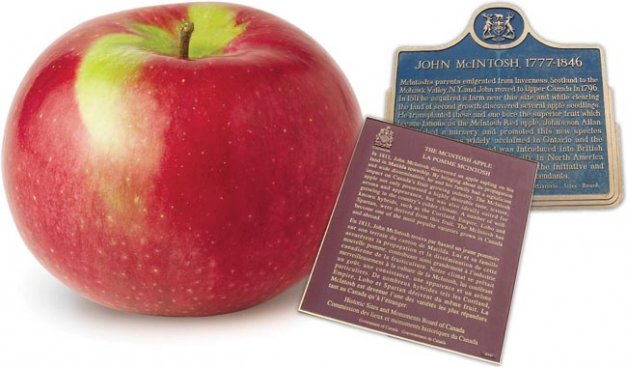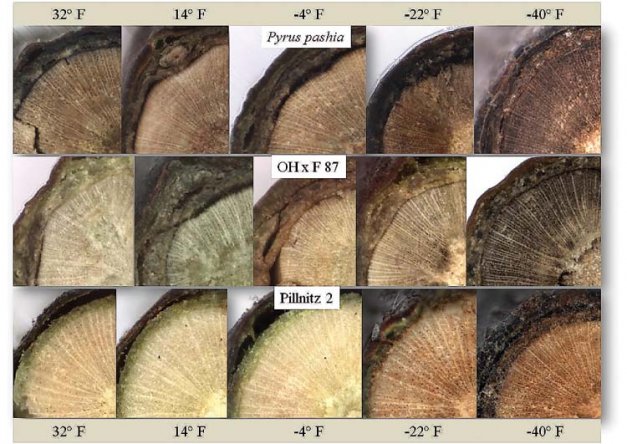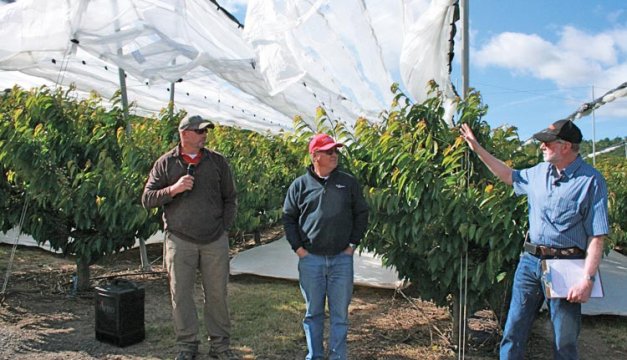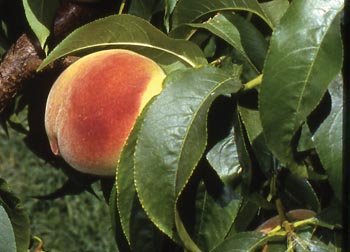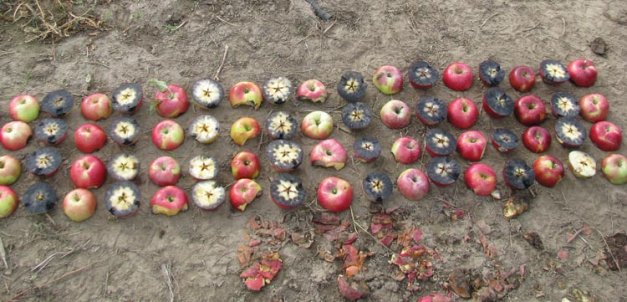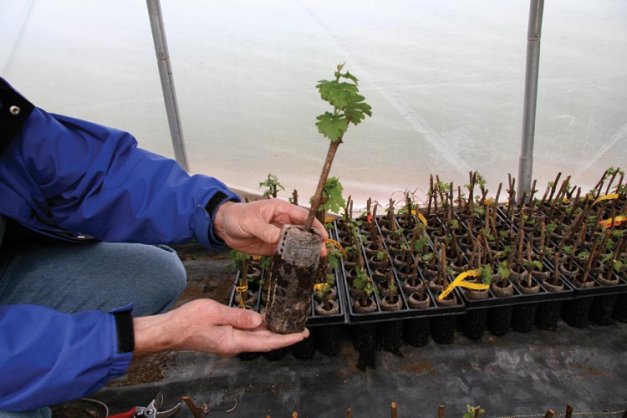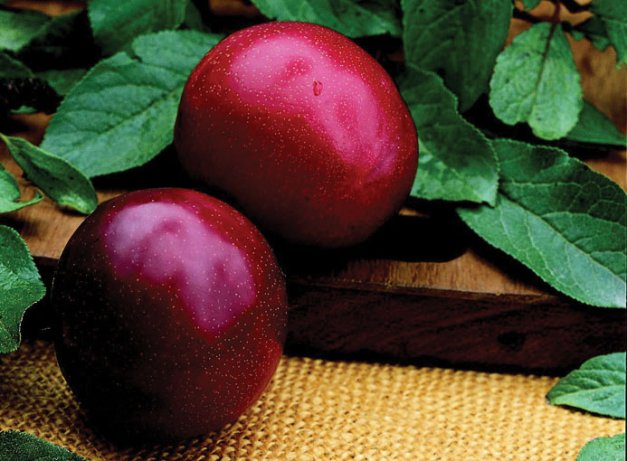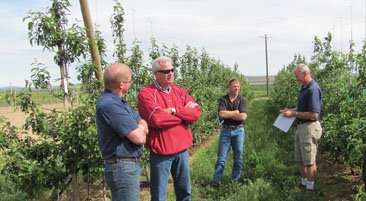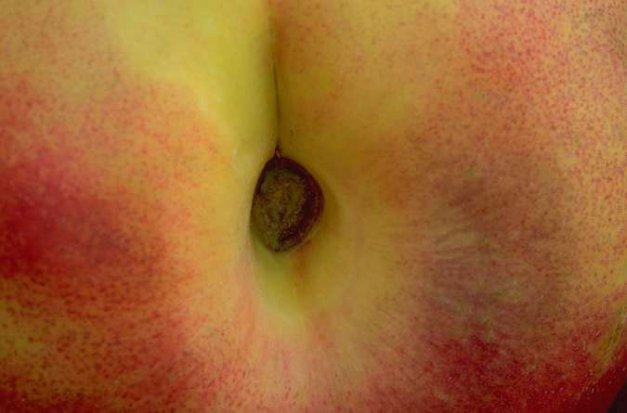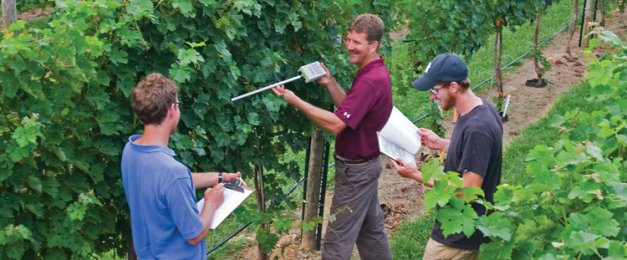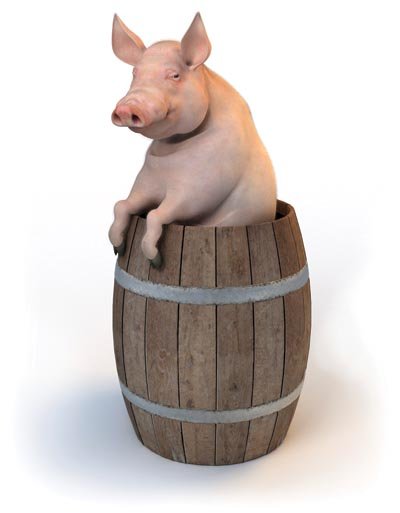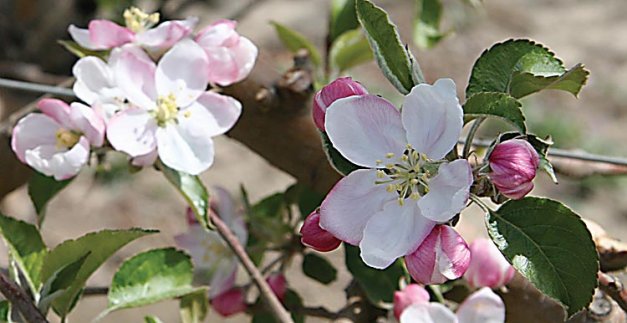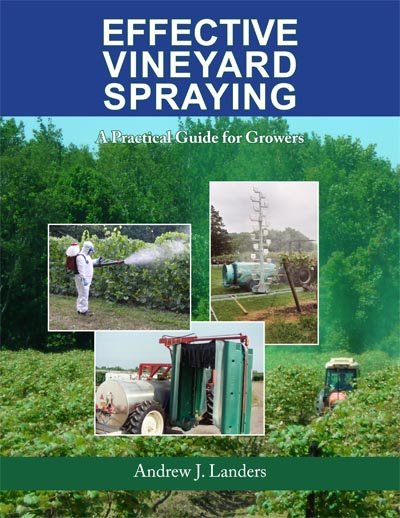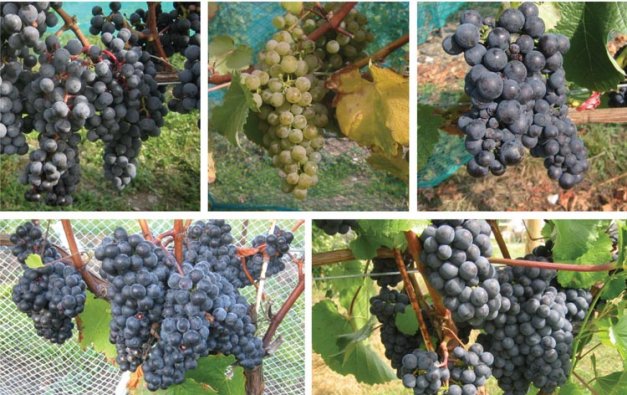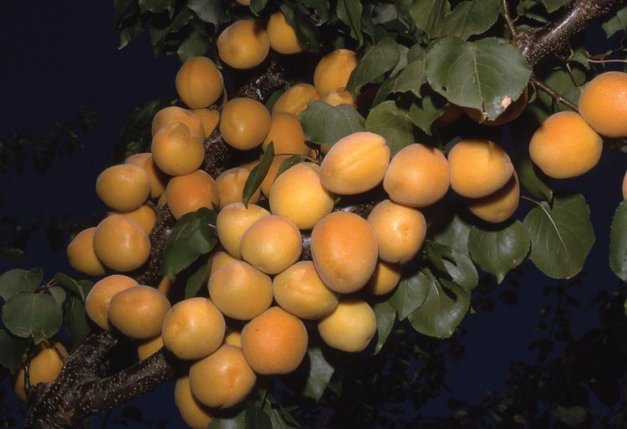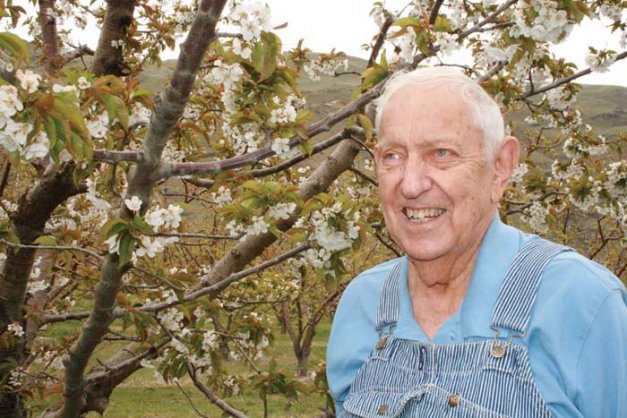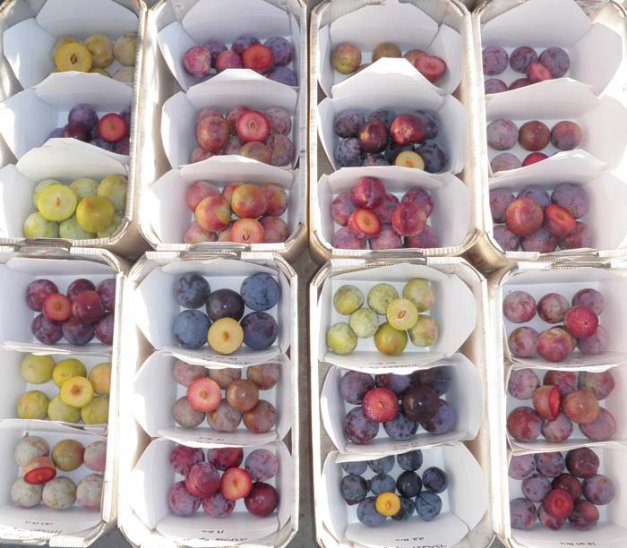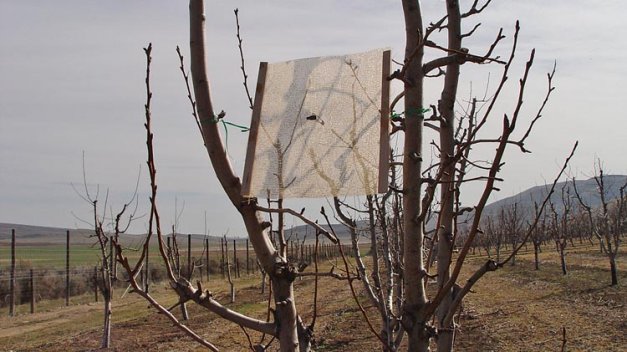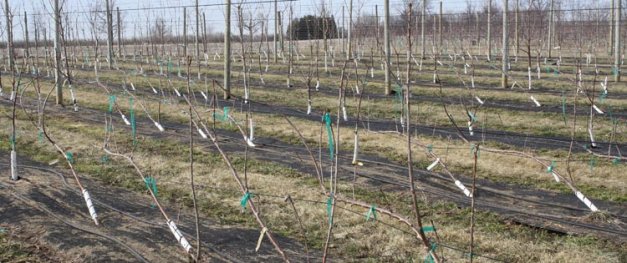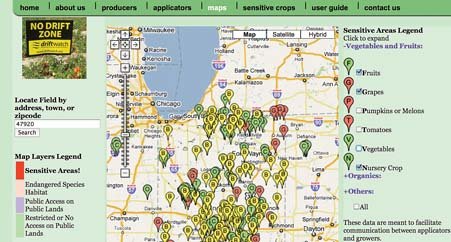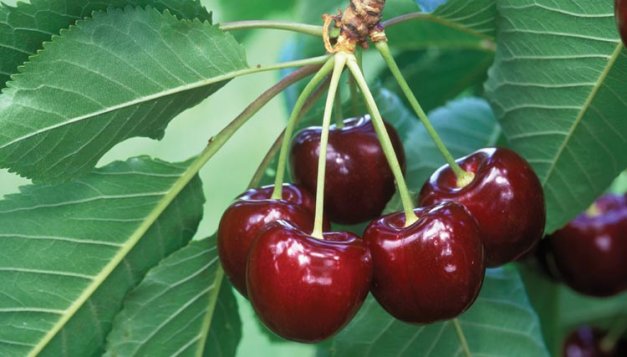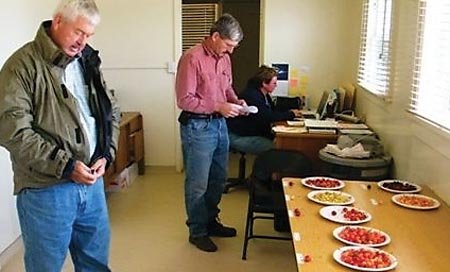ADVERTISEMENT
Picker and sorter
Miguel Geronimo found himself testing the new harvester during his first season as an apple
Picker and platform
A four-person picking crew can have two on the ground or all four on the
Concord grapes, part of American culture
Though Concord was generally accepted as being pure Vitis labrusca, horticulturists today believe it is
SweeTango lawsuit settled
An out-of-court settlement of the lawsuit challenging the exclusive marketing arrangement for the SweeTango apple
On a FasTrack
Horticulturist Ralph Scorza pollinates plum flowers while geneticist Ann Callahan measures sugar content and molecular
South Carolina peach breeder wants better peaches, faster
Ksenija Gasic heads Clemson University’s peach-breeding program, which was recently revived after a 25-year hiatus.
Performance of WA 2 in industry evaluations
Figure 1: “Parrot beak” can occur on WA 2 fruit grown on one-year-old wood. Washington
Tweets tout SweeTango
Eastern Canadian radio personality Kate Peardon’s photo was on the Facebook page of Scotian Gold
Growing sought-after Syrah grapes
Mike Sauer of Red Willow Vineyard was the first to plant Syrah wine grapes in
Where should Syrah be planted?
Syrah wine grapes can be successful in warm and cool sites in Washington State. However,
Last Bite–Fuji, a world-class apple
Fuji proved to be more difficult to grow and pack than Grady Auvil imagined. Fuji
East Malling pilgrimage
Jon Clements of the University of Massachusetts, left, admires trees at the Hatton Fruit Gardens
Wine industry backs new center
The Washington Wine Commission’s commitment of $7.4 million towards the cost of building a Wine
Varieties in the concept pear orchard
Tony Sunnucks’s concept orchard includes two new varieties developed by Delbard Nurseries in France: Delsanne
U.K. grower demos modern concepts
Tony Sunnucks, a fruit grower in Kent, England, is developing a concept pear orchard financed
Grow perfect Forelle pears on Tatura
Forelle is an attractive, medium-size pear that requires special management and skill to grow it
Last Bite
The tribute to John McIntosh appears on a blue plaque near Dundela, Ontario, Photo by
Quince evaluated for hardiness
Pear trees are inherently inefficient at partitioning growth resources to fruit. Modern-day pear rootstock/scion combinations
Multipurpose orchard cover
Oregon State University Extension educator Lynn Long (right) asks partners Steve Agidius (left) and John
Building a better fly trap
The spotted wing drosophila is easy to catch using cheap and readily available baits. Apple
Last Bite
Elberta is not highly colored, but it has good flavor, bears dependably, and is widely
Apple selections evaluated for postharvest performance
Starting about three weeks before anticipated harvest, fruit of each selection is tested weekly for
What’s hot in grape varieties
Jeff Sample has a small greenhouse that he uses to grow cuttings and increase the
Tree fruit research is WSU priority
The top tree fruit industry in the nation requires and deserves one of the nation’s
Problems with pear ripening
The ripening inhibitor SmartFresh (MCP) holds promise for maintaining pear quality over a longer period
Special assessment would fund research
A referendum will be held soon to find out if growers are willing to pay
MCP substitute studied
Scientists at Washington State University have filed a patent application for a product that could
Fast, easy test reveals fungicide resistance
When disease organisms become resistant to a fungicide, spraying is like hitting them with rainwater—expensive
Peaches on ridges
Impressed by early research results, Titan Farms planted 200 acres of peaches on ridges to
Last Bite
The Santa Rosa plum was the most widely grown plum in California until the mid-1970s.
WSU apple breeding program’s fruit evaluation system
Members of the breeding program’s Industry Advisory Council visit a Phase 3 evaluation site at
Clemson peach team
More peaches—about 17,000 acres— are grown in South Carolina than any other state east of
Eastern U.S. wine industry gets lift
Tony Wolf, center, is director of the Alson H. Smith, Jr. Agricultural Research and Extension
The end of earmarks?
Earmarks are often considered equivalent to pork barrel legislation, but the two are not necessarily
Life after carbaryl
In the absence of carbaryl, growers will need a palette of chemical thinning options and
Good Stuff
New spraying book Dr. Andrew Landers’ new book Effective Vineyard Spraying is now available for
Predicting grapevine cold hardiness
Being able to predict the cold hardiness of grapes could help growers know how to
Honeycrisp challenges club concept
The name SweeTango captures the apple’s sweet, tangy taste. COURTESY SALLY & WILFRID MENNELL Honeycrisp
WSU to protect new varieties
Washington State University is taking steps to protect its new apple variety, WA 2, in
Grapes for Puget Sound
Left to right, Top: Regent, Gruner Veltliner, Pinot Noir Precoce. Bottom: Golubok, Rondo Field trials
Patterson, an all-round apricot
The late private fruit breeder Fred Anderson, known as father of the modern-day nectarine, is
Apples for every taste
As well as growing fresh apples, Jack Feil grows cider apples, including Hewes Crab, a
Honeycrisp season expanded
(Courtesy Wescott Agri Products) Right from the get-go, Fred Wescott thought Honeycrisp would be a
Hopes were high
A colorful sampling of interspecific plum selections bred by Glen Bradford of BQ Genetics. BQ
Varieties that are changing the peach industry
The New Jersey Peach Festival has been held in July for the past 25 years,
Pear psylla pheromone discovered
The newly discovered pear psylla pheromone is being tested in the field to find out
Growing cherries on new systems
On March 30 of this cool spring, the year-old test planting was showing no sign
DriftWatch shows sensitive crops
These pushpin-like balloons identify sites that are sensitive to ill effects from spray drift. Growers
Last Bite – Bing is still king
The Bing cherry was named for Seth Lewelling's Chinese foreman. NORTHWEST CHERRY GROWERS Bing has
Cherry breeding is slow work
Bob Andersen (left) is evaluating some 60,000 seedlings created from the breeding work of David

